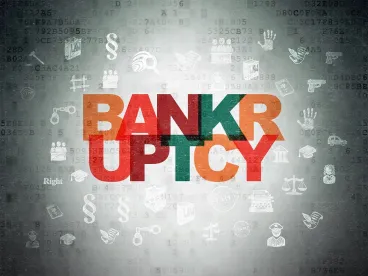Yesterday, the Supreme Court issued is highly awaited ruling in Czyzewski et al. v. Jevic Holding Corp. et al. The Jevic case presented the question whether bankruptcy courts may approve non-consensual structured dismissals that vary the distribution scheme established by the Bankruptcy Code. With Justice Breyer writing for the majority, the Court held that bankruptcy courts may not approve structured dismissals that provide for distributions that run afoul of the Code’s priority rules without the consent of affected creditors. The Court’s ruling is sure to have a dramatic impact upon Chapter 11 cases and is certainly required reading for bankruptcy and restructuring professionals.
The official committee of unsecured creditors appointed in Jevic filed fraudulent transfer and preference claims against Sun Capital Partners and CIT Group arising from Sun’s prepetition acquisition of Jevic through a leveraged buyout. Under the Jevic structured dismissal, general unsecured creditors received a distribution from a settlement reached among the committee, Sun Capital and CIT. However, certain former employees received nothing from the settlement, notwithstanding that they had obtained a $12.4 million judgment against Jevic, of which $8.3 million constituted a priority wage claim under section 507(a)(4) of the Bankruptcy Code. The priority wage claim was entitled to payment ahead of general unsecured creditors.
The bankruptcy court approved the structured dismissal, and by extension the distribution provided for in the settlement, and the district court and Third Circuit both affirmed. Echoing the bankruptcy and district courts, the Third Circuit reasoned that Congress had codified the absolute priority rule in the specific context of chapter 11 plan confirmation only, and that therefore, structured dismissals that do not adhere to the priority scheme of the Bankruptcy Code can be permissible “only in those ‘rare case[s]’ in which courts could find ‘sufficient reasons’ to disregard priority.” The key for the three Jevic lower courts in approving the structured dismissal was that priority was violated in the context of a dismissal, rather than in the context of a chapter 11 plan.
The Supreme Court reversed the Third Circuit, holding that a bankruptcy court cannot approve a structured dismissal that provides for distributions contrary to the Bankruptcy Code’s priority rules without the affected creditors’ consent. The Court reasoned that the Bankruptcy Code’s priority scheme is fundamental to the operation of the Bankruptcy Code, and that therefore “we would expect to see some affirmative indication of intent if Congress actually meant to make structured dismissals a backdoor means to achieve the exact kind of nonconsensual priority-violating final distributions that the Code prohibits in Chapter 7 liquidations and Chapter 11 plans.” The Court could not find any such “affirmative indication of intent.” Furthermore, the Court reasoned that provisions of the Code that govern dismissals “seek a restoration of the prepetition financial status quo.” Although sections 349 and 1112 of the Bankruptcy Code afford the bankruptcy court some discretion to order otherwise for “cause,” this discretion is to be used to “protect rights acquired in reliance on the bankruptcy case” and does not authorize bankruptcy courts to “make general end-of-case distributions of estate assets to creditors,” such as those made as part of Jevic’s structured dismissal.
In reversing the Third Circuit, the Supreme Court noted that it “express[es] no view about the legality of structured dismissals in general,” thus leaving unanswered the permissibility of a structured dismissal that either does not violate the Bankruptcy Code’s priority scheme or that violates the Bankruptcy Code’s priority scheme but which is consented to by affected creditors. The Court was also careful to distinguish case-ending structured dismissals from other interim distributions that may violate the priority scheme, such as “first day” orders authorizing payment of critical vendors and payment of employees’ prepetition wages. While the former, by its terms, ends the case, the latter can serve “significant Code-related objectives” such as preservation of the debtor as a going concern or increasing the likelihood of a confirmable plan. As a result, these payments are permissible, notwithstanding their apparent violation of the Bankruptcy Code’s priority scheme.
What are the implications of Jevic? First and foremost, Jevic puts an end to non-consensual structured dismissals that violate the priority scheme established by the Bankruptcy Code. Many bankruptcy courts had temporarily stopped approving such structured dismissals pending the Supreme Court’s ruling. Now the wait is over, and this type of structured dismissal is not permitted. Second, the Court’s discussion of first day motions will likely lead to increased scrutiny of such motions to ensure that they serve “significant Code-related objectives” and not overly generous giveaways to particular creditor groups. Third, Jevic may lend credence to arguments against so-called “gift plans.” In a gift plan, a senior creditor “gifts” or pays part of its recovery to a lower ranking creditor, skipping over non-consenting creditors who are senior to the creditor receiving the gift. Although the Court did not discuss gift plans in its opinion, certainly the primacy of the Bankruptcy Code’s priority scheme as discussed in the opinion could provide ammunition for creditors seeking to oppose a gift plan.



 />i
/>i

